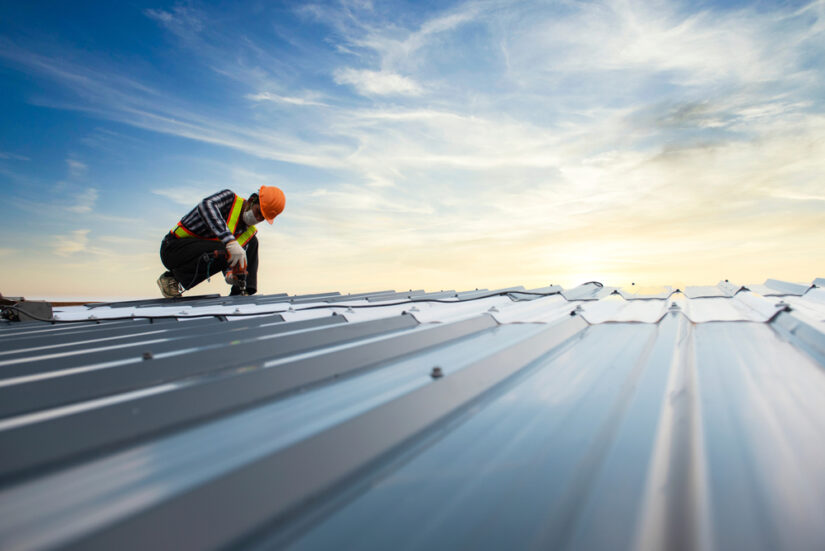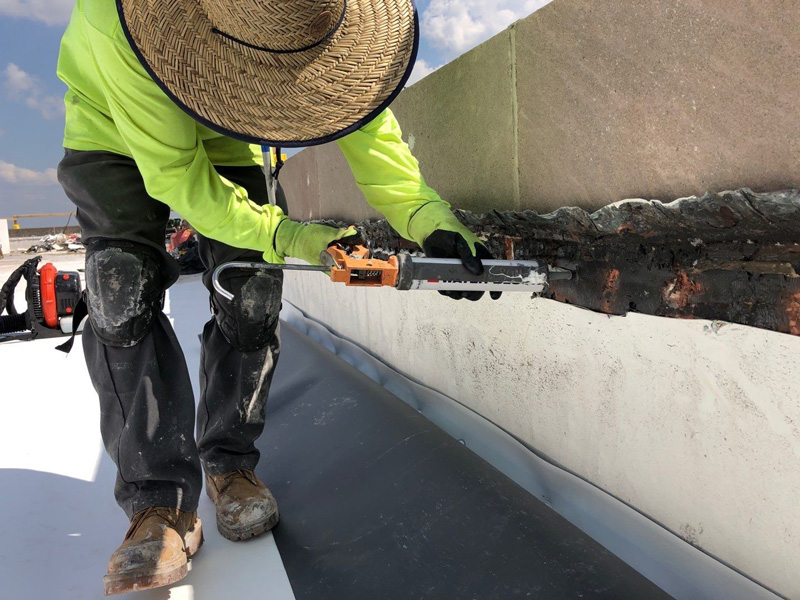A Comprehensive Guide to Effective Roof Flat Roofing Setup
The details of flat roof covering installation demand a thorough technique, beginning with a detailed understanding of numerous level roofing kinds and the vital materials needed for optimum performance. An effective installment hinges not only on the choice of materials but likewise on the preparation and implementation of each action involved in the procedure.
Comprehending Apartment Roof Covering Kind
When considering level roofing systems, it is vital to recognize the different types offered, as each offers distinctive benefits and downsides customized to certain requirements. The most common sorts of level roof coverings consist of Built-Up Roof (BUR), Changed Bitumen, and Single-Ply membrane layers.
Built-Up Roofing includes several layers of asphalt and crushed rock, offering excellent sturdiness and weather resistance. It is especially helpful in areas vulnerable to serious weather yet may need more maintenance because of its intricate building and construction.
Changed Bitumen is a preferred option for its convenience of setup and versatility. It commonly uses a self-adhesive or torch-applied technique, which can be beneficial for quick repair work and long-term performance. Nonetheless, its lifespan can be much shorter contrasted to BUR.
Single-Ply membrane layers, including Thermoplastic Olefin (TPO) and Ethylene Propylene Diene Monomer (EPDM), are recognized for their light-weight nature and energy performance. These materials are frequently preferred for business buildings due to their cost-effectiveness and ease of installation (Cleveland Roofing Specialists). However, they may not give the same level of insulation as other choices.
Each roof covering kind requires careful factor to consider based upon climate, spending plan, and specific job needs.
Important Products for Apartment Roofing
A selection of crucial materials are vital for the successful installment of flat roof. The option of materials directly influences durability, efficiency, and general efficiency.
One of the key products is the roof membrane, which can be constructed from various materials such as thermoplastic polyolefin (TPO), ethylene propylene diene monomer (EPDM), or PVC. Each type provides unique advantages, consisting of UV resistance and versatility, which are important for prolonged efficiency.
In addition to the membrane, insulation products play a considerable role in power performance. Rigid foam boards or polyisocyanurate insulation are preferred options, as they provide excellent thermal resistance and dampness management.
Moreover, roof adhesives and sealants are vital for guaranteeing a leak-proof installation. These products must work with the selected membrane layer to avoid wear and tear with time.
Preparing for Installation
Proper prep work is important for an effective level roofing installment, as it lays the foundation for a sturdy and efficient roof system. Begin by performing a thorough examination of the existing roofing structure.
Next, collect all essential devices and materials, making sure that they meet market requirements. This consists of water-proof membranes, insulation, blinking, and bolts. Familiarize on your own with the producer's specifications, as adherence to these guidelines is essential for service warranty objectives.
Think about weather condition conditions; stay clear of setup during heavy rain or severe temperature levels, which can influence material efficiency. By taking these primary steps, you can boost the chance of a successful level roof setup that fulfills both visual and structural demands.
Step-by-Step Installment Process
With the foundation developed with complete prep work, the next phase entails carrying out the level roofing installment methodically. Begin by ensuring that the architectural deck is clean and free from debris. Next, install a vapor obstacle to stop dampness buildup under the roofing product. This step is important for preserving the roofing system's stability with time.
Complying with the vapor obstacle installment, set insulation boards, guaranteeing they fit firmly with each other to reduce thermal connecting. Safeguard the insulation with suitable bolts based upon the roofing kind and local building codes. Once the insulation remains in place, it's time to use the roof covering membrane layer. Depending web link upon the picked material-- such as TPO, EPDM, or customized bitumen-- mount the membrane layer according to the manufacturer's requirements.
Install flashing around perimeters, vents, and any type of roof infiltrations to boost waterproofing. After installation, carry out a detailed evaluation to recognize any kind of potential concerns before ending the task, making sure a robust and dependable flat roofing system.
Maintenance Tips for Long Life
Routine maintenance is vital to guarantee the durability and efficiency of a level roof. One of the key jobs is to carry out regular inspections at the very least twice a year, ideally in springtime and fall. During these evaluations, seek indications of wear, such as blisters, splits, or pooling water, which can indicate underlying problems.

Guaranteeing appropriate water drainage is crucial to avoid water buildup. Examine and clear seamless gutters, downspouts, and scuppers to assure unhampered water circulation. Furthermore, evaluate seals around vents, skylights, and various other penetrations for any kind of signs of damage, using caulk or sealer as required to maintain a leak-proof obstacle.
Last but not least, consider specialist maintenance services every few years for thorough maintenances. By sticking to these maintenance ideas, you can considerably extend the life of your flat roofing system, guaranteeing it remains a trusted guard versus the elements.
Final Thought
Reliable level roof installation requires a methodical strategy including detailed inspections, product choice, and thorough prep work. Complying with the outlined steps throughout the installment procedure makes sure the appropriate application of roof covering membrane layers and insulation while boosting waterproofing with reliable flashing installment. Additionally, implementing routine upkeep methods substantially contributes to the longevity of the roof. By following these standards, a dependable and durable flat roofing solution can be accomplished, capable of enduring numerous environmental conditions.
The complexities of flat roofing system installation need a meticulous method, starting with an extensive understanding of numerous level roofing kinds and the necessary materials needed for optimal site link efficiency.Appropriate prep work is crucial for a successful flat roofing setup, as it lays the groundwork for a long lasting and reliable roofing system. After installment, perform an extensive assessment to determine any type of potential issues look at here now before wrapping up the task, making certain a reputable and durable level roof system.
